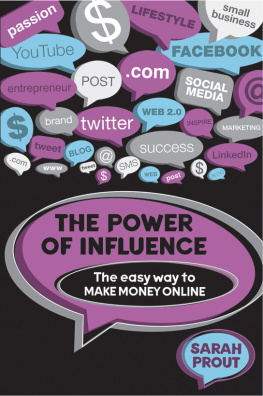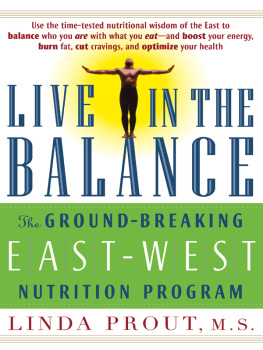
Real Food for Everyone Copyright 2015 Ann Gentry. Photography copyright 2015 Sara Remington. Originally published in 2011
by Andrews McMeel Publishing of Kansas City, Missouri,
as Vegan Family Meals. All rights reserved. No part of this
book may be used or reproduced in any manner whatsoever without written permission except in the case of reprints in the context of reviews. Andrews McMeel Publishing, LLCan Andrews McMeel Universal company1130 Walnut Street, Kansas City, Missouri 64106.

Contents


It takes a village to raise a cookbook. I have much gratitude to my village: my immediate family, friends, business associates, employees, and guests at Real Food Daily who contributed to the raising of this book.
Many thanks,
To Rochelle Palermo, my recipe editor and tester for both my cookbooks, who transformed my culinary ideas into coherent, ex-ecutable recipes for all to enjoy.
Acknowledgments
To writer Laura Samuel Meyn, who came through at every juncture in this process with laserlike attention to detail and made sense of my half-baked or sometimes overcooked words and ideas.
To Sara Remington and teamyou can come over to my house anytime to prep, cook, style, shoot, and make magic turning my recipes into beautiful photographs.
To the team at Andrews McMeel, starting with publisher Kirsty Melville, who once again opened a door for me; Jean Lucas, my editor, who was always available and kept me on point; and Julie Barnes and Diane Marsh, the fantastic design team who created the right frame for my recipes and Saras photographs.
To my Real Food team, Kacy Hulme and Beth Griffiths, my as-sistants who held my work space togetherthank you both for the support you gave me in writing this book. And to my chefs, Shelly, Ivy and Romualdothanks for answering all my persnickety questions.
To Robert Jacobs, my husband, for his unwavering support and belief in what I do.
And to our children, Halle and Walker, who are the future faces of a world where more people will eat delicious, balanced, organically grown real food.


introduction
W ant your family to enjoy deli-cious, healthful meals and snacks? Feel and look their best? Improve their long-term health? Help the envi-ronment? Vegan food makes an incred-ible difference, for our bodies and for the world around us. Ive been experiment-ing with various vegetarian and vegan cuisines for three decades, starting as a young actress struggling with my weight and appearance, and today as a workingmother with two children and the propri-etress of Americas leading organic vegan restaurants, Real Food Daily. Ive learned in order to stick with a plant-based diet, one must cook at home, with simple reci-pes. This book is filled with flavorful and satisfying recipes that support everyones health, personal ethics, and the environ-ment that we all share.
Its not necessary to become vegan or vegetarian to enjoy the benefits of eating plant-based meals. Dont let an all-or-nothing attitude turn you off: Its well worth the effort to consume less meat and dairy even if you dont eliminate it
entirely. In fact, my own diet is just shyof 100 percent vegan. On occasion, I eat asmall amount of fish and dairy.
After a childhood spent eating a typi-cal American diet, Southern-style, and later surviving on sweets and cigarettes in college, my life took a profound turn in my twenties. I was an aspiring actress in New York City, waiting tables at a veg-etarian restaurant in Greenwich Village. Whole Wheat n Wild Berrys was a place percolating with energy and information about how to eat differently. I quickly eliminated meat and dairy from my diet.
Inspired by the budding natural foods movement, I experimented with fasting, juicing, and megavitamins. But conflict-ing information and impractical dietary regimes left me feeling lost and confused. After wading through most of the natural foods stores offerings, I found macro-biotics, a diet based on whole grains and vegetables, to be the most sensible and balanced. Macrobiotics taught me how to eat, and how to cook. Most important, macrobiotics taught me the connection between diet and health. (For more on macrobiotics, turn to page .) Later,

Introduction
when I moved to California, my newfoundproximity to local organic farmers and outdoor markets was another great inspiration.
Over the years, Ive explored the many permu-tations of a plant-based diet. I spent years as a strict vegan and a macrobiotic, and I experimented with raw foods, food combining, wheat- and gluten-free eating, and other dietary regimes. Today, I know what makes me feel besta mostly vegan diet.
Its a good time to be vegan or vege-tarian. In the 1970s natural foods was a fringe movement, but today it is mainstream. Being vegan is actually cool. When I began changing my diet, many vegetarian products and ingredients were only available at a few independent natural foods stores. Today, vegetarian, vegan, macrobi-otic, and whole foods ingredients and products are available at conventional mainstream super-markets across America.
The natural foods movement rose in response to an epidemic of degenerative diseases: Twentieth-century America saw an explosion of heart disease, diabetes, obesity, certain cancers, and more. Most of these diseases can be directly attributed to radical changes in our food supply, changes brought about by the industrial revolution. In response, authors and researchers began to identify and document the connection between industrialized food and the degenerative diseases suddenly plaguing America and began to tear down the myth that meat is a nec-essary part of a nutritious diet.
In 1971, Frances Moore Lapp published Diet for a Small Planet, a radical book for itstime, telling people how they could thrive without meat. Lapps book laid the foundation for a vegetarian movement to flourish among the Baby Boom generation. In 1987, John Robbins pub






















